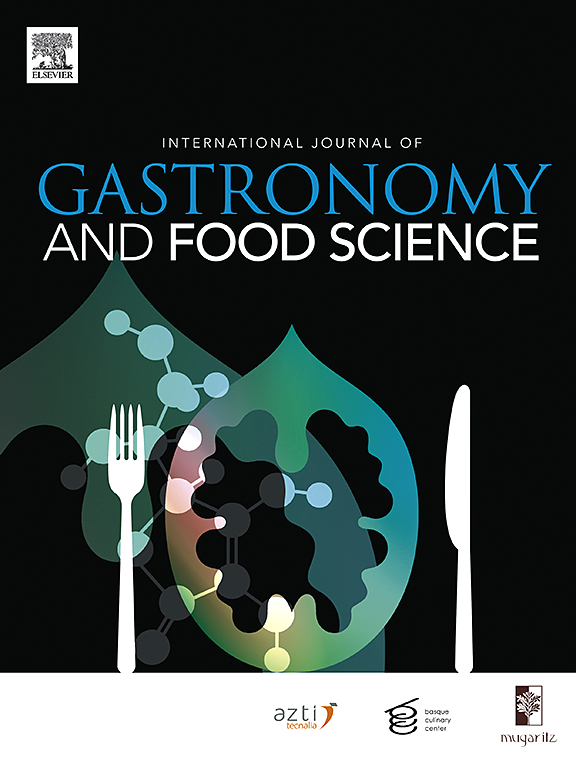Craving and colour: How do individual characteristics, food and tableware colours interact to influence food craving?
IF 3.2
2区 农林科学
Q2 FOOD SCIENCE & TECHNOLOGY
International Journal of Gastronomy and Food Science
Pub Date : 2025-01-16
DOI:10.1016/j.ijgfs.2025.101115
引用次数: 0
Abstract
The craving to eat is a complex phenomenon influenced by biological, psychological, and environmental factors. This study investigates the impact of colour on the craving to eat, considering individual factors such as gender, age, body mass index (BMI), and dieting status. The study involved 702 adult participants from two major cities in Turkey who completed questionnaires assessing their craving to eat and their perceptions of various food and tableware colours. The results indicated that women, young adults, individuals with obesity, and those on a diet tend to have a higher craving to eat. The study also found that the colours of food and tableware can significantly affect the craving to eat. For instance, red food increased the craving to eat, while black and grey foods decreased it. Black tableware increased the craving to eat, while yellow and green tableware decreased it. The effect of colour on the craving to eat also varied depending on gender, age, BMI, and dieting status. The study concludes that the craving to eat is a multifaceted phenomenon and that colour plays a significant role in influencing it. The findings of this study have important implications for the development of strategies to promote healthy eating habits and manage weight. The study also highlights the need for further research to understand the complex relationship between colour and eating behaviour.
求助全文
约1分钟内获得全文
求助全文
来源期刊

International Journal of Gastronomy and Food Science
Social Sciences-Cultural Studies
CiteScore
5.30
自引率
10.50%
发文量
170
审稿时长
45 days
期刊介绍:
International Journal of Gastronomy and Food Science is a peer-reviewed journal that explicitly focuses on the interface of food science and gastronomy. Articles focusing only on food science will not be considered. This journal equally encourages both scientists and chefs to publish original scientific papers, review articles and original culinary works. We seek articles with clear evidence of this interaction. From a scientific perspective, this publication aims to become the home for research from the whole community of food science and gastronomy.
IJGFS explores all aspects related to the growing field of the interaction of gastronomy and food science, in areas such as food chemistry, food technology and culinary techniques, food microbiology, genetics, sensory science, neuroscience, psychology, culinary concepts, culinary trends, and gastronomic experience (all the elements that contribute to the appreciation and enjoyment of the meal. Also relevant is research on science-based educational programs in gastronomy, anthropology, gastronomic history and food sociology. All these areas of knowledge are crucial to gastronomy, as they contribute to a better understanding of this broad term and its practical implications for science and society.
 求助内容:
求助内容: 应助结果提醒方式:
应助结果提醒方式:


